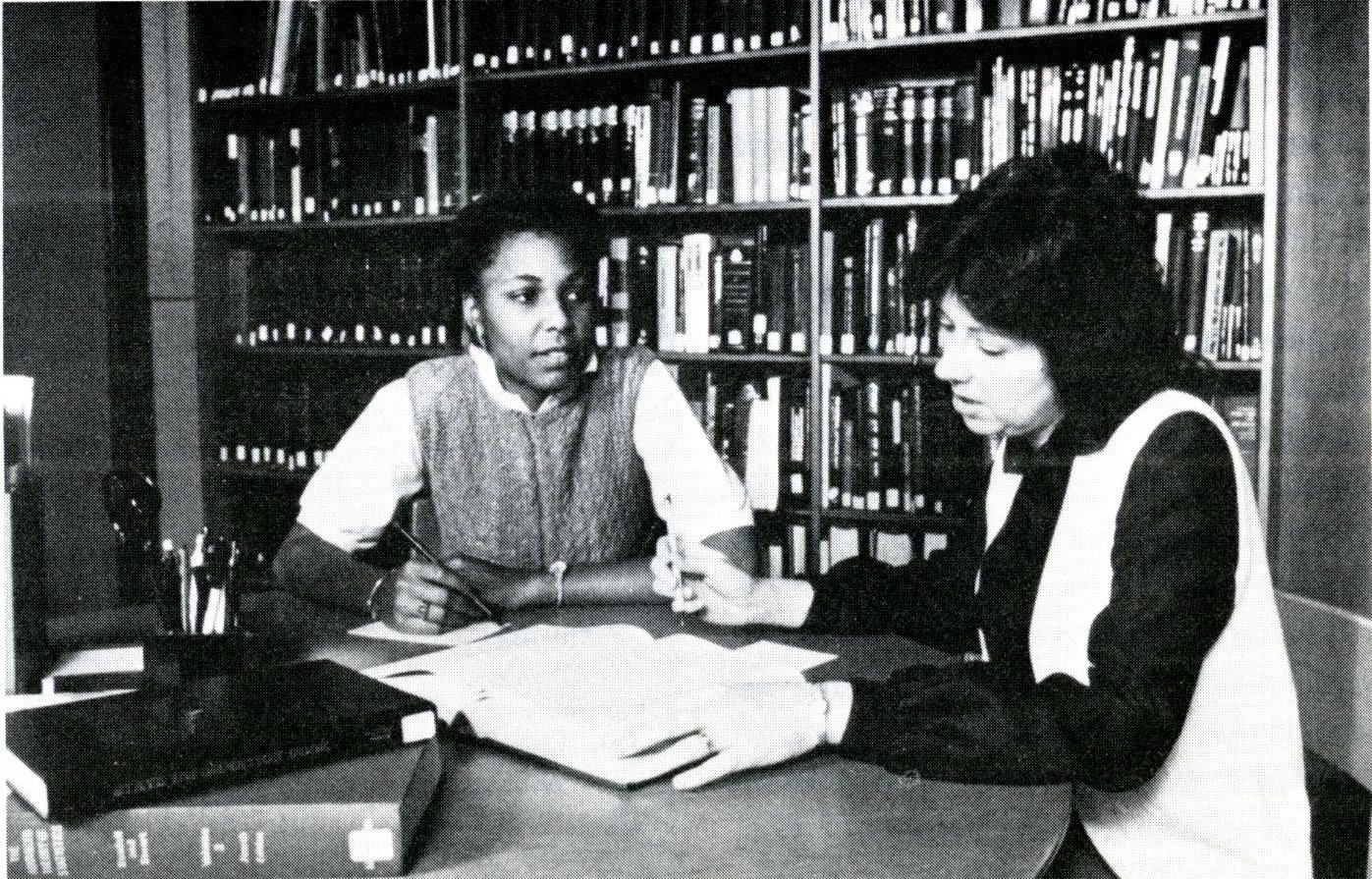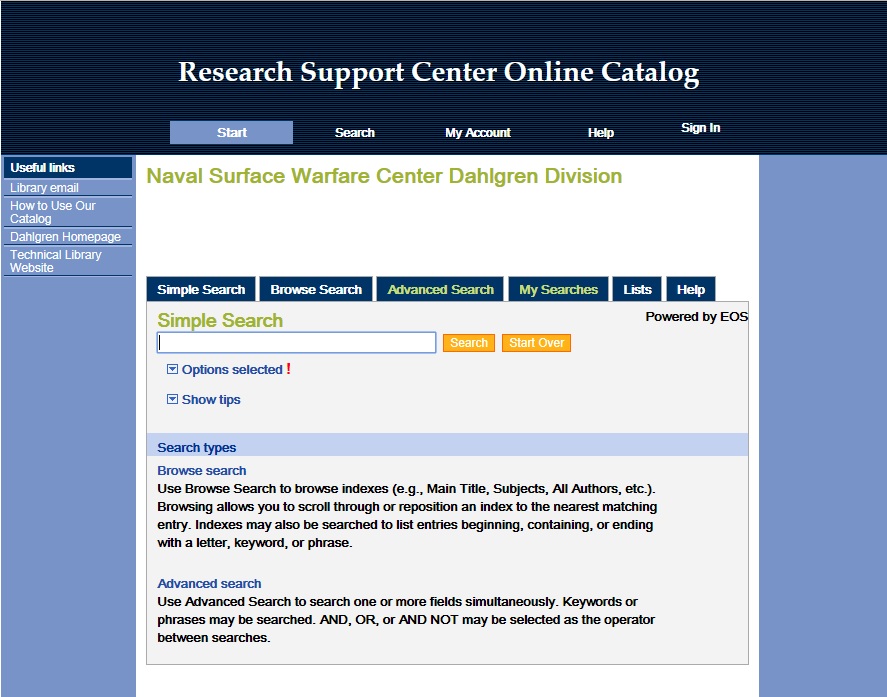
The NSWCDD Technical Library
By Sara Krechel
Tucked into Building 111, one of the oldest buildings on base, is one of Dahlgren’s oldest and best-kept secrets: the NSWCDD Technical Library. You won’t find Harry Potter in this library (though you will find Divergent Series—not the same thing as the recent book and film franchise), but what you will find is a wealth of scientific, engineering, research, and development knowledge in the form of books, reports, magazines, and microfiche and microfilm, as well as a wide array of e-resources and online subscriptions.
The library started in Aug. 1944 as the Naval Proving Ground Ordnance Division Library, an independent activity under the Ordnance Officer. The base sent a letter to the Chief of Naval Personnel stating “an extremely large volume of technical reports, letters, pamphlets and books had been accumulated by this section. Much of this technical information was of permanent interest and value, since it carried a wide variety of ordnance investigations conducted during the war years.”
The base requested designating a complement of five enlisted WAVES [Women Accepted for Volunteer Emergency Service] and one Wave Officer with library experience for the task. The Wave Officer reported for duty nearly four months later. On Feb. 23, 1945, the library facilities were made available to all officers and employees of the base. The WAVES established a system to organize, catalog, cross reference, and make available the books and reports. This system involved preparing three identical card catalogs, each cross-referencing and showing the disposition of the books and reports. At the time, the library contained about 1,500 books and 15,000 reports.

Ordnance Division Library Group, c. mid-1940s
Over the years, accessing information evolved as technology changed. The WAVES’ card catalogs were transferred to an IBM 7090 computer in the early 1960s. Data retrieval with these new computers meant creating a bibliographic record on a punch card, printing multiple sets of index cards, and filing them in the card catalog. The automation boom in the late 1980s eased the burden of this process, and the technical library was in front of it, inventorying and barcoding more than a million items, streamlining the information retrieval process. Today we use an online website.
|

|
.jpg?ver=2018-06-21-123251-487)
|

|
|
Researchers in the Reading Room of the Technical Library, 1963
|
1988
|
Library Technician Kim Frye (left) and librarian Betsy Loving ponder a reference question, 1987. |
During the late 1970s, “data banks” were emerging, and NSWC set up special collections known as Government-Furnished Information Data Banks. These data banks stored subject-specific collections, such as Aegis, Combat System Architecture, Millimeter Wave, and Shipboard Surveillance Radar Systems. In later years, the special collections developed into other “satellite” libraries with which the Technical Library formed a community of interest. Some of these are still in existence, such as Standard Missile, Warfare Systems Information Center (formerly the Aegis Data Center), and Strategic Launched Ballistic Missile (also known as Fleet Ballistic Missile). Some have been since incorporated into the Technical Library collection: Chemical, Biological, and Radiological Defense; Standard Missile; and the K Department mathematics library.
.jpg?ver=2018-06-21-123251-487) |
.jpg?ver=2018-06-21-123259-377) |
Sandra U. Rose,
Head Technical Librarian |
Technical Library staff. All names are left to right.
1- Documentation Center: Irene Kelly, Sam Bushrod, Mark Coward, Ella Mae Jones.
2- Regina Brown?
3- Betsy Loving.
4- Technical Processing Group: Becky Clark?, Mary Rich, Jean Gouldman, James Childers, Regina Brown.
5- Aegis Data Center and FBM Library: Angela Self, Kathy Sawdy, Debbie Coppage, Debbie Rawlette, Margaret Purce.
6- Secretary: Audrey Jennings.
7- Top Row: Kim Frye, Marilyn Muncie, Betsy Loving, Martha Rollins.
Bottom row: Connie Armstead, Patty Hartenbach, Margaret Perry, Patt Pulliam. |
When the White Oak Laboratory closed in 1997, many documents and records from that library were incorporated into the Dahlgren library. Some of the employees from the White Oak library also transferred to Dahlgren.
|

|
 |
| c. 1997 |
Visitors to the Open House explored new items in the newly renovated building, 1997 |
The scope of library holdings has drastically expanded. The original 1,500 books and 15,000 reports grew to an estimated 32,000 books and 118,000 reports, including the extensive collection of Dahlgren-generated reports, manuals, and reference material. And this doesn’t include the online subscriptions! Today’s library collections cover a wide range of topics, including computer programming, electromagnetic theory, thermodynamics, neural networks, fluid mechanics, radar principles, shock waves, and so much more. The catalog (https://n94046.eos-intl.net/N94046 ) is online and accessible from any computer and, through an ongoing digitization effort, patrons can access many resources without stepping into the library. The online subscriptions cover nearly 11,000 journals and conference titles (over 7 million articles and papers) as well as e-books, a military and industry standards (1.7 million historical and current records) database, and a logistics management system. Examples of the publishers subscribed to include:
· American Physical Society
· American Institute of Physics
· American Chemical Society
· American Institute of Aeronautics and Astronautics
· Association for Computing Machinery
· American Mathematical Society
· Institute of Electrical and Electronics Engineers
· International Society for Optics and Photonics
· Optical Society of America
· Jane’s
· Information Handling Service (IHS)

EOS User Homepage
The technical library has a team of librarians who are more than happy to assist with research requests. Through the interlibrary loan program and a consortium of other Navy and federal libraries, many resources are available that are not part of the library’s in-house collection. Books or articles have come from as near as NAS Patuxent River and as far as Australia. The team can be contacted by email (DLGR_NSWC_INFOLIB@navy.mil), by phone, or by stopping by Building 111, Rooms 126 and 128.